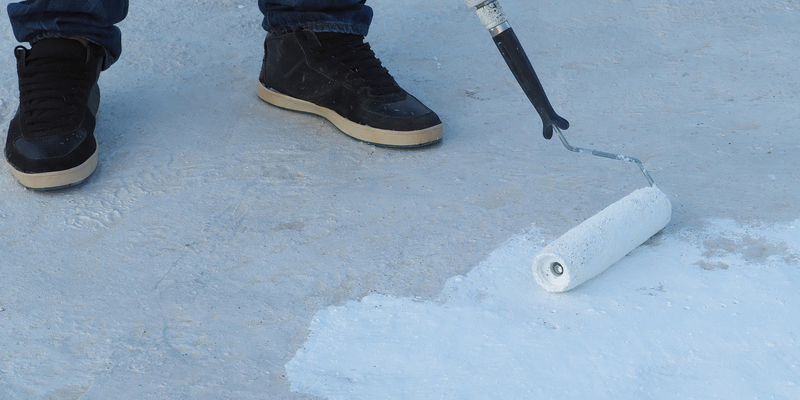
Cool Your Home: The Benefits of Roof Heat Coating
As summer temperatures soar, many homeowners are grappling with soaring energy bills and the discomfort of sweltering indoor temperatures. The relentless sun beats down on roofs, turning your home into a hotbox and forcing air conditioners to work overtime. This not only strains your wallet but also your patience.
But what if there was a way to keep your home cooler and more energy-efficient without breaking the bank? Enter roof heat coating—a smart, effective solution designed to combat heat absorption and lower energy costs. In this blog, we’ll explore the benefits of roof heat coating, from enhanced energy efficiency and extended roof lifespan to its positive environmental impact.
What is Roof Heat Coating?
Roof heat coating is a specialized treatment applied to the surface of roofs to reflect solar radiation and reduce heat absorption. The primary purpose of this coating is to keep indoor temperatures lower by minimizing the amount of heat transferred from the roof into the building. By reflecting the sun’s rays rather than absorbing them, roof heat coatings can significantly reduce the need for air conditioning, thereby lowering energy consumption and costs.
Different Types of Heat Coatings Available:
- Reflective Paints:
- Description: These are high-performance paints infused with reflective materials such as aluminum or titanium dioxide.
- Purpose: Designed to reflect sunlight and heat, reducing the temperature of the roof surface.
- Benefits: Cost-effective and easy to apply; suitable for various roof types.
- Elastomeric Coatings:
- Description: These are flexible, rubber-like coatings that expand and contract with the roof surface.
- Purpose: Provides both insulation and protection against weather elements.
- Benefits: Excellent durability and elasticity; helps prevent leaks and extend roof lifespan.
- Reflective Membranes:
- Description: These are pre-fabricated sheets or rolls made of materials like TPO (Thermoplastic Olefin) or PVC (Polyvinyl Chloride).
- Purpose: Applied over the existing roof to reflect heat and provide a waterproof barrier.
- Benefits: Long-lasting and effective in both reflecting heat and providing a waterproof layer.
- Cool Roof Shingles:
- Description: Shingles coated with reflective granules that enhance heat reflection.
- Purpose: Reduces heat absorption and improves overall roof cool coating.
- Benefits: Provides a dual benefit of aesthetic appeal and energy efficiency.
Each type of heat coating offers distinct advantages, and the choice of coating will depend on factors such as the existing roof material, climate, and budget.
Key Benefits of Roof Heat Coating
Energy Efficiency
Roof heat coatings work by reflecting a significant portion of solar radiation away from the roof surface. This reflection minimizes heat absorption, which means less heat enters the building. Consequently, your air conditioning system doesn’t have to work as hard to cool the indoor environment. This reduction in cooling load directly translates to lower energy bills, providing substantial savings over time.
By keeping the indoor temperature cooler, roof heat coatings contribute to a more efficient energy usage pattern in your home. With less reliance on air conditioning, the overall energy consumption is reduced, which not only saves money but also helps in lowering your household’s carbon footprint.
Temperature Regulation
Roof heat coatings play a crucial role in regulating indoor temperatures. By reflecting heat away from the roof, these coatings ensure that the internal environment remains more stable and comfortable. This consistent temperature helps in maintaining a pleasant living space and reduces the need for frequent adjustments to your cooling systems.
In contrast to non-coated roofs, which absorb and retain heat, a roof with heat coating significantly mitigates heat gain. Non-coated roofs can cause indoor temperatures to spike, especially during peak summer months. The difference in temperature regulation between coated and non-coated roofs can be dramatic, with coated roofs often resulting in cooler indoor spaces and improved comfort.
Extended Roof Lifespan
Roof heat coatings provide a protective barrier against harmful UV rays and harsh weather conditions. By shielding the roof material from direct sunlight and environmental wear, these coatings help prevent deterioration and damage. This extended protection can significantly increase the lifespan of your roof.
With the added protection from a heat coating, the roof is less likely to suffer from common issues such as cracking, fading, and water damage. This means fewer repairs and less frequent replacements, ultimately leading to cost savings and a longer-lasting roof.
Environmental Impact
By enhancing the energy efficiency of your home, roof heat coatings contribute to a lower carbon footprint. Reduced energy consumption means fewer greenhouse gas emissions associated with power generation, which is beneficial for the environment.
Roof heat coatings support broader energy conservation efforts by minimizing the energy required for cooling. As more homes adopt this technology, the collective reduction in energy demand can contribute to a more sustainable future and reduce strain on energy resources.
Conclusion
In summary, roof heat coating offers a range of significant benefits that can enhance the comfort and efficiency of your home. By reflecting solar radiation and minimizing heat absorption, these coatings help maintain a cooler indoor environment and reduce your cooling costs. This energy efficiency translates into lower utility bills and a reduced carbon footprint, contributing to both environmental conservation and personal savings.
Additionally, roof heat coatings extend the lifespan of your roof by protecting it from UV rays and weathering, which reduces the need for frequent repairs and replacements. This added protection not only enhances the durability of your roof but also ensures its long-term value.
Overall, investing in roof heat coating is a smart choice for any homeowner looking to improve energy efficiency, enhance indoor comfort, and protect their property while making a positive impact on the environment.


Comment (0)